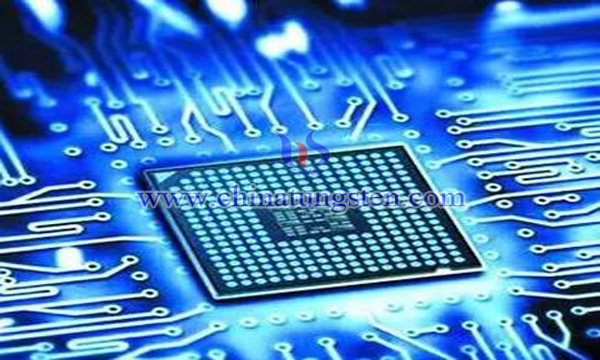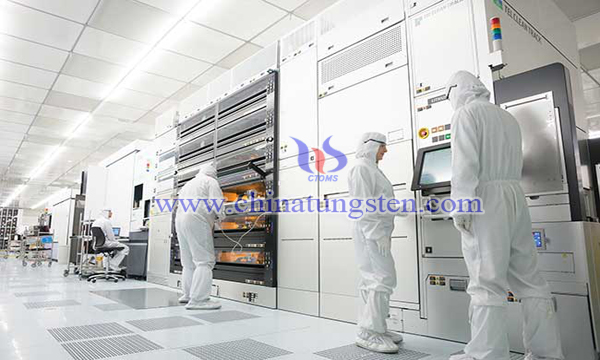Future Quantum Chip
- Details
- Category: Tungsten's News
- Published on Sunday, 12 August 2018 17:58
Quantum computers are devices that use quantum logic for universal computing. Unlike traditional computers, the object of quantum computing to store data is quantum bits, which use quantum algorithms to manipulate data.

Conventional computers use binary data to store information of 1 or 0. Due to the characteristics of quantum mechanics, qubits can represent third States of 0 and 1 simultaneously. The third state can be used to speed up calculations so that a quantum computer with only a few dozen qubits can perform some calculations as quickly as a microchip with a billion binary transistors.
Quantum computers are far from being truly influential to people's lives. But 2017 is undoubtedly a milestone in the early stages of quantum computer development. According to US media reports, IBM has taken the lead in breaking through the 49 quantum bit simulation mark. The development of quantum computing has reached a critical point. After the equivalent sub-bit simulation breaks through 50, it can begin to solve other more traditional methods that cannot be efficiently calculated or even Important issues that cannot be calculated, such as aerospace science, cosmology, medicine, or military, have not solved many of the problems. It can also be described as such, its computing power will be hundreds of times stronger than the existing supercomputer, but the volume is much smaller.
Everything happens in a very small space. In order to obtain these quantum properties, researchers must use high-quality materials, which is one of the most advanced research in the field of electronics today, and teams around the world are trying to climb this peak. Recently, a team of researchers studying quantum electronic materials in the United States found that materials such as graphene, molybdenum disulfide (MoS2) and tungsten diselenide (WSe2) can be used alone or in combination to produce tiny chips with less heat. A core processor material used to make a computer, such as a semiconductor transistor.

"Material that requires only a single atom thick, what we call a two-dimensional material, will be a revolutionary replacement for the next generation of electronic devices, but it's actually a challenge to design circuits so thin at the moment, two-dimensional materials are thin - only a few atom layers thick," the researchers said. But they have great potential to change infrared imaging, quantum information technology and so on.
Graphene is undoubtedly a star in the world of two-dimensional materials, but graphene is not the only two-dimensional material. Researchers believe that there are nearly 1,000 kinds of two-dimensional materials in the world, but graphene has pioneered the application of such materials. In addition to graphene, transition metal disulfides have also been extensively studied. They are collectively known as TMDS, including tungsten disulfide, molybdenum disulfide, tungsten diselenide, molybdenum diselenide, etc.
The researchers believe that the spin of electrons and holes in two-dimensional semiconductors of the type TMDS transition metal disulfides can be in one of two states, usually described as upward-upward-downward-downward rotation, which is called spin splitting, and the researchers were first in TMDC materials. Electrons were measured and spin splitting was used in TMDC to introduce polarized spin current into graphene without magnetic field.

"Material that requires only a single atom thick, what we call a two-dimensional material, will be a revolutionary replacement for the next generation of electronic devices, but it's actually a challenge to design circuits so thin at the moment, two-dimensional materials are thin - only a few atom layers thick," the researchers said. But they have great potential to change infrared imaging, quantum information technology and so on.
Graphene is undoubtedly a star in the world of two-dimensional materials, but graphene is not the only two-dimensional material. Researchers believe that there are nearly 1,000 kinds of two-dimensional materials in the world, but graphene has pioneered the application of such materials. In addition to graphene, transition metal disulfides have also been extensively studied. They are collectively known as TMDS, including tungsten disulfide, molybdenum disulfide, tungsten diselenide, molybdenum diselenide, etc.
The researchers believe that the spin of electrons and holes in two-dimensional semiconductors of the type TMDS transition metal disulfides can be in one of two states, usually described as upward-upward-downward-downward rotation, which is called spin splitting, and the researchers were first in TMDC materials. Electrons were measured and spin splitting was used in TMDC to introduce polarized spin current into graphene without magnetic field.
Copyright Statement: This article is only used by China Tungsten Industry Association and China Tungsten Online. Any individual may not copy or reproduce it without written permission or without specifying the copyright and origin. Otherwise, it will be regarded as infringement and the website will be prosecuted for legal liability according to law.
- Tungsten Manufacturer & Supplier, Chinatungsten Online: www.chinatungsten.com
- Tungsten News & Prices of China Tungsten Industry Association: www.ctia.com.cn
- Molybdenum News & Price: news.molybdenum.com.cn
- Tel.: 86 592 5129696; Fax: 86 592 5129797; Email: sales@chinatungsten.com



 sales@chinatungsten.com
sales@chinatungsten.com